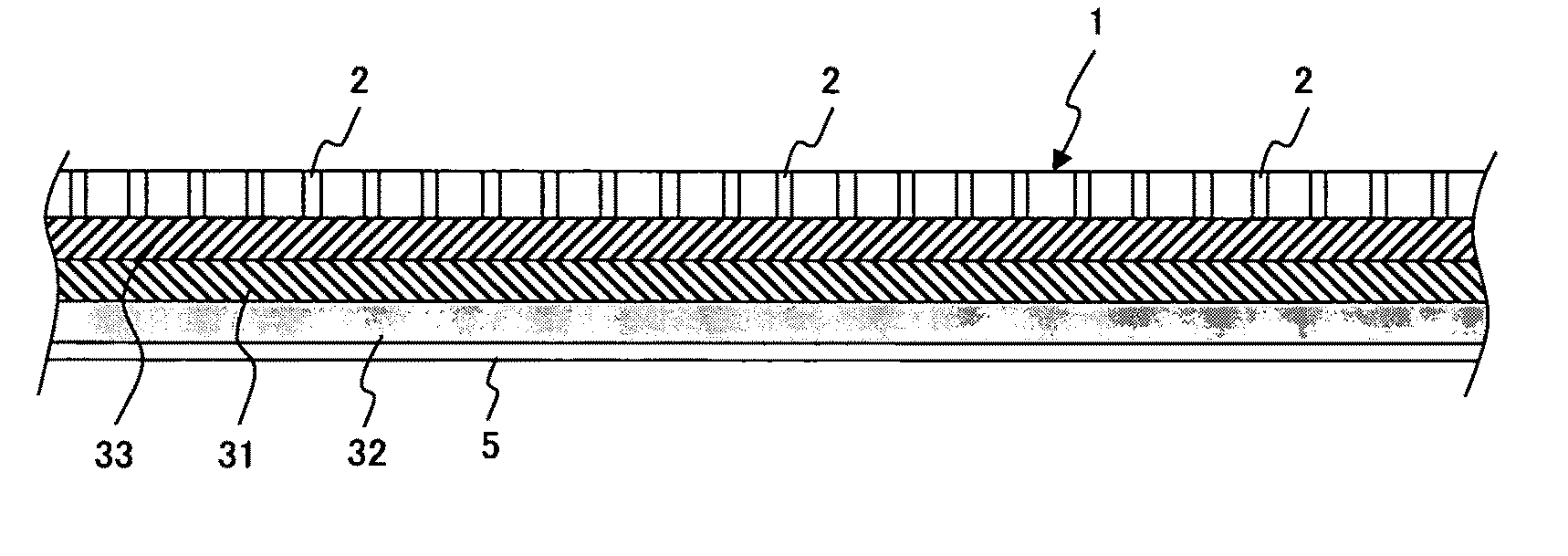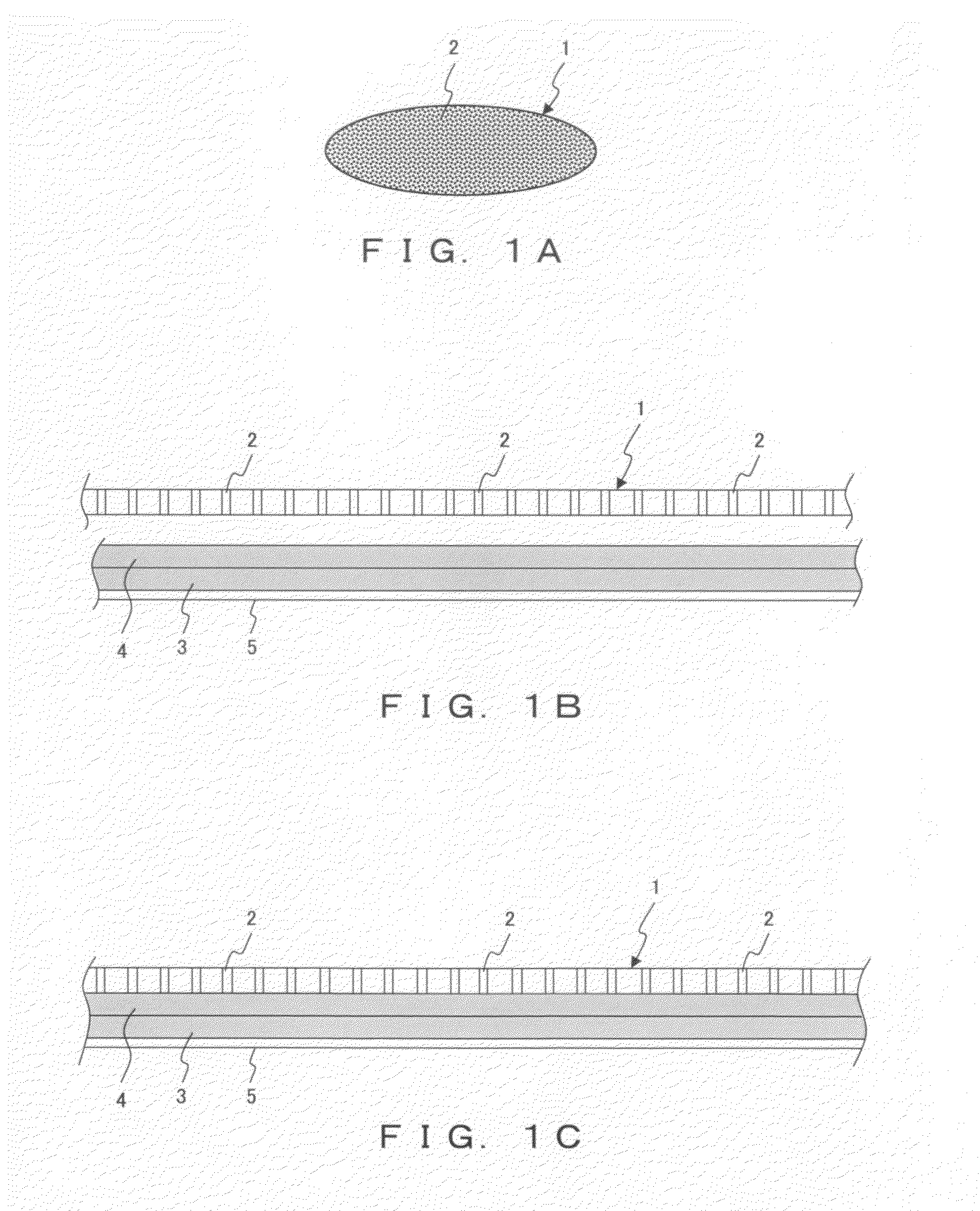Method of bonding, thinning, and releasing wafer
a technology of thinning and releasing wafers, applied in the directions of transportation and packaging, paper/cardboard containers, containers, etc., can solve the problems of affecting the yield of thinned wafers, the inability to support thinned wafers only on protection tapes, and the inability to automate processing steps, so as to reduce the risk of damaging the wafers and the yield of higher yield
- Summary
- Abstract
- Description
- Claims
- Application Information
AI Technical Summary
Benefits of technology
Problems solved by technology
Method used
Image
Examples
example 1
[0075]FIG. 1A is a perspective view schematically showing a configuration of a support plate used in a process of thinning a wafer executed in example 1. This process will be explained later. FIG. 1B is a cross-sectional view schematically showing the relationship between the support plate and the wafer when they are aligned with each other. FIG. 1C is a cross-sectional view schematically showing the state of the support plate and the wafer after they are bonded together by a thermal compression bonding method with an adhesive agent layer between them.
[0076]As shown in FIG. 1A, a support plate 1 is a rigid-body circular glass plate.
[0077]As shown in FIG. 1A, a number of micro through holes 2 are formed evenly throughout the entire surface of the support plate 1.
[0078]As shown in FIG. 2B, the support plate 1 is aligned with a wafer 5 in an adhering apparatus. A plurality of types of adhesive agent layers including hard and soft types (a hard adhesive agent layer 3 and a soft adhesive...
example 2
[0131]FIG. 6 is a cross-sectional view schematically showing a state of a support plate and wafer that have been bonded with adhesive agent layers between them by a thermal compression bonding method, which is executed before the wafer is thinned by being ground / polished in the process of thinning a wafer explained in example 2.
[0132]As shown in FIG. 6, the support plate 1 and the wafer 5 are bonded together with three layers, i.e., a hard adhesive agent layer 31 between soft adhesive agent layers 32 and 33.
[0133]One of the two soft adhesive agent layers is bonded to the wafer 5 (the soft adhesive agent layer 32 at the bottom in FIG. 6), and the other of the soft adhesive agent layers is bonded to the support plate 1 (the soft adhesive agent layer 33 at the top in FIG. 6).
[0134]It is possible to apply the above three adhesive agent layers by repeating steps S1 and S2 shown in FIG. 3. It is also possible to first apply the soft adhesive agent layer 32 and thereafter stack sheets of t...
PUM
| Property | Measurement | Unit |
|---|---|---|
| diameter | aaaaa | aaaaa |
| thickness | aaaaa | aaaaa |
| thickness | aaaaa | aaaaa |
Abstract
Description
Claims
Application Information
 Login to View More
Login to View More - R&D
- Intellectual Property
- Life Sciences
- Materials
- Tech Scout
- Unparalleled Data Quality
- Higher Quality Content
- 60% Fewer Hallucinations
Browse by: Latest US Patents, China's latest patents, Technical Efficacy Thesaurus, Application Domain, Technology Topic, Popular Technical Reports.
© 2025 PatSnap. All rights reserved.Legal|Privacy policy|Modern Slavery Act Transparency Statement|Sitemap|About US| Contact US: help@patsnap.com



